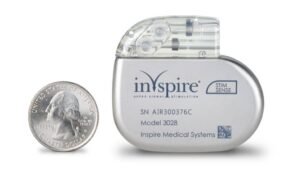Can You Become Gluten-Intolerant Later in Life_

Can You Develop Gluten Intolerance Later in Life?
Read Time: 7 mins
Gluten intolerance, particularly celiac disease, can strike at any age, catching many by surprise in adulthood. This autoimmune condition triggers an immune response to gluten, damaging the small intestine and causing a range of symptoms, from digestive issues to fatigue. Affecting roughly 1% of the global population, celiac disease can emerge in childhood or later in life. This guide explores why gluten intolerance may develop in adulthood, its symptoms, risk factors, diagnosis, and management, offering clear insights for those navigating this condition.
What Is Gluten and Celiac Disease?
Gluten is a protein found in grains like wheat, barley, and rye, acting as a binding agent in foods like bread and pasta. For people with celiac disease, gluten is a trigger that prompts the immune system to attack the small intestine’s lining, leading to inflammation, nutrient malabsorption, and potential long-term health issues. Unlike non-celiac gluten sensitivity, celiac disease is a diagnosed autoimmune disorder with specific medical implications.
Can Celiac Disease Develop Later in Life?
Yes, celiac disease can manifest in adulthood, even if you’ve consumed gluten without issues for years. While some individuals show symptoms as children, others remain symptom-free until their 30s, 40s, or beyond. The exact reasons for this delayed onset are unclear, but several factors may contribute:
- Cumulative Gluten Exposure: Long-term gluten consumption may eventually trigger symptoms in genetically predisposed individuals.
- Life Events: Stressful events like pregnancy, childbirth, surgery, or infections can activate the condition.
- Environmental Triggers: Changes in diet, gut microbiome, or chronic stress may play a role.
For example, some women report symptoms emerging post-pregnancy, possibly due to hormonal shifts or immune system changes. Others notice issues after a major illness or emotional upheaval.
Symptoms of Celiac Disease
Celiac disease is notoriously tricky to diagnose because it can present with over 200 symptoms, varying widely between individuals. Some people experience no symptoms (silent celiac disease) yet still test positive. Symptoms often differ by age:
- Children: Typically show digestive issues like diarrhea, bloating, or weight loss.
- Adults: More likely to have non-digestive symptoms, such as fatigue or joint pain.
Common symptoms include:
- Chronic diarrhea or constipation
- Abdominal pain or bloating
- Unexplained weight loss
- Persistent fatigue
- Itchy, blistering skin rash (dermatitis herpetiformis)
- Headaches or migraines
- Joint or bone pain
- Mood changes, like anxiety or depression
- Tingling or numbness in hands or feet
- Anemia (low iron levels)
- Irregular periods, infertility, or recurrent miscarriages
- Mouth ulcers or canker sores
Because symptoms can mimic other conditions, many adults live with undiagnosed celiac disease for years.
Risk Factors for Developing Celiac Disease
While anyone can develop celiac disease, certain factors increase the likelihood:
- Genetics: Over 95% of people with celiac disease carry the HLA-DQ2 or HLA-DQ8 gene. However, only a small fraction of gene carriers (about 1 in 30) develop the condition, indicating other triggers are involved.
- Family History: If a close relative (parent, sibling, or child) has celiac disease, your risk rises to 5–10%.
- Related Health Conditions: Conditions like type 1 diabetes, Hashimoto’s thyroiditis, Down syndrome, or Turner syndrome are linked to higher celiac risk.
- Gender: Women are diagnosed more often than men, possibly due to hormonal influences or higher healthcare-seeking behavior.
Even without these risk factors, celiac disease can still develop, especially after a triggering event.
How Is Celiac Disease Diagnosed?
Diagnosing celiac disease requires a multi-step process, as symptoms alone aren’t enough. If you suspect gluten intolerance, consult a healthcare provider for proper testing. Steps include:
- Blood Test: Measures levels of specific antibodies (e.g., anti-tissue transglutaminase or anti-endomysial antibodies) produced in response to gluten. You must be eating gluten for accurate results.
- Genetic Testing: Checks for HLA-DQ2 or HLA-DQ8 genes to rule out or support the likelihood of celiac disease.
- Small Intestine Biopsy: If blood tests are positive, an endoscopy may be performed. A thin tube with a camera is inserted through the mouth to the small intestine, where a tissue sample is taken to check for damage (villous atrophy). This is the gold standard for diagnosis.
- Follow-Up: After diagnosis, your doctor monitors symptom improvement on a gluten-free diet.
Important: Don’t start a gluten-free diet before testing, as it can skew results and delay diagnosis.
How Is Celiac Disease Treated?
The only effective treatment for celiac disease is a lifelong, strict gluten-free diet. This means avoiding all foods, beverages, and even medications containing wheat, barley, rye, or their derivatives. Key aspects of management include:
- Gluten-Free Diet: Eliminates gluten to allow the small intestine to heal, often improving symptoms within days to weeks. Common gluten-free foods include rice, quinoa, fresh produce, and certified gluten-free products.
- Nutritional Support: Malabsorption may cause deficiencies in iron, vitamin B12, or vitamin D. Your doctor may prescribe supplements to correct these.
- Medications: In rare cases, drugs like dapsone are used for severe skin rashes (dermatitis herpetiformis).
- Dietitian Guidance: A celiac-specialized dietitian can help you navigate food labels, meal planning, and dining out safely.
Most people see significant symptom relief within 1–2 months of going gluten-free, with intestinal healing progressing over months to years.
Challenges of Late-Onset Celiac Disease
Developing celiac disease later in life can be jarring, especially if you’ve enjoyed gluten-containing foods for decades. Challenges include:
- Lifestyle Adjustment: Learning to identify hidden gluten in sauces, processed foods, or medications takes time.
- Social Impact: Dining out or attending events may feel restrictive.
- Emotional Toll: Coping with a chronic condition can lead to frustration or anxiety.
Support groups, online resources, and gluten-free recipe blogs can ease the transition.
When to See a Doctor
Seek medical advice if you experience:
- Persistent digestive issues (e.g., diarrhea, bloating, or pain).
- Unexplained symptoms like fatigue, anemia, or skin rashes.
- A family history of celiac disease, even without symptoms.
- Reproductive issues, such as infertility or miscarriages.
Early diagnosis prevents complications like osteoporosis, malnutrition, or increased risk of certain cancers (e.g., small bowel lymphoma).
Key Takeaways
- Celiac disease, an autoimmune reaction to gluten, can develop at any age, including adulthood, due to genetic, environmental, or stress-related triggers.
- Symptoms vary widely, from digestive woes to fatigue or neurological issues, making diagnosis tricky without testing.
- Risk factors include genetics, family history, and certain health conditions, but anyone can develop it.
- Diagnosis involves blood tests and a small intestine biopsy; treatment requires a lifelong gluten-free diet.
Frequently Asked Questions
Can you suddenly become gluten-intolerant without celiac disease?
Yes, non-celiac gluten sensitivity can develop later in life, causing symptoms like bloating or fatigue without intestinal damage. It’s less understood and requires ruling out celiac disease first.
How long does it take to feel better after going gluten-free?
Most people notice symptom improvement within days to weeks, but full intestinal healing may take 6 months to 2 years, depending on age and damage severity.
Can stress alone cause celiac disease?
Stress may trigger symptoms in genetically predisposed individuals but isn’t a sole cause. It often acts as a catalyst alongside other factors.
Join Our Health & Wellness Community
Want more insights on managing dietary conditions and staying healthy? Subscribe to our newsletter for weekly tips, gluten-free recipes, and wellness advice to support your journey!





